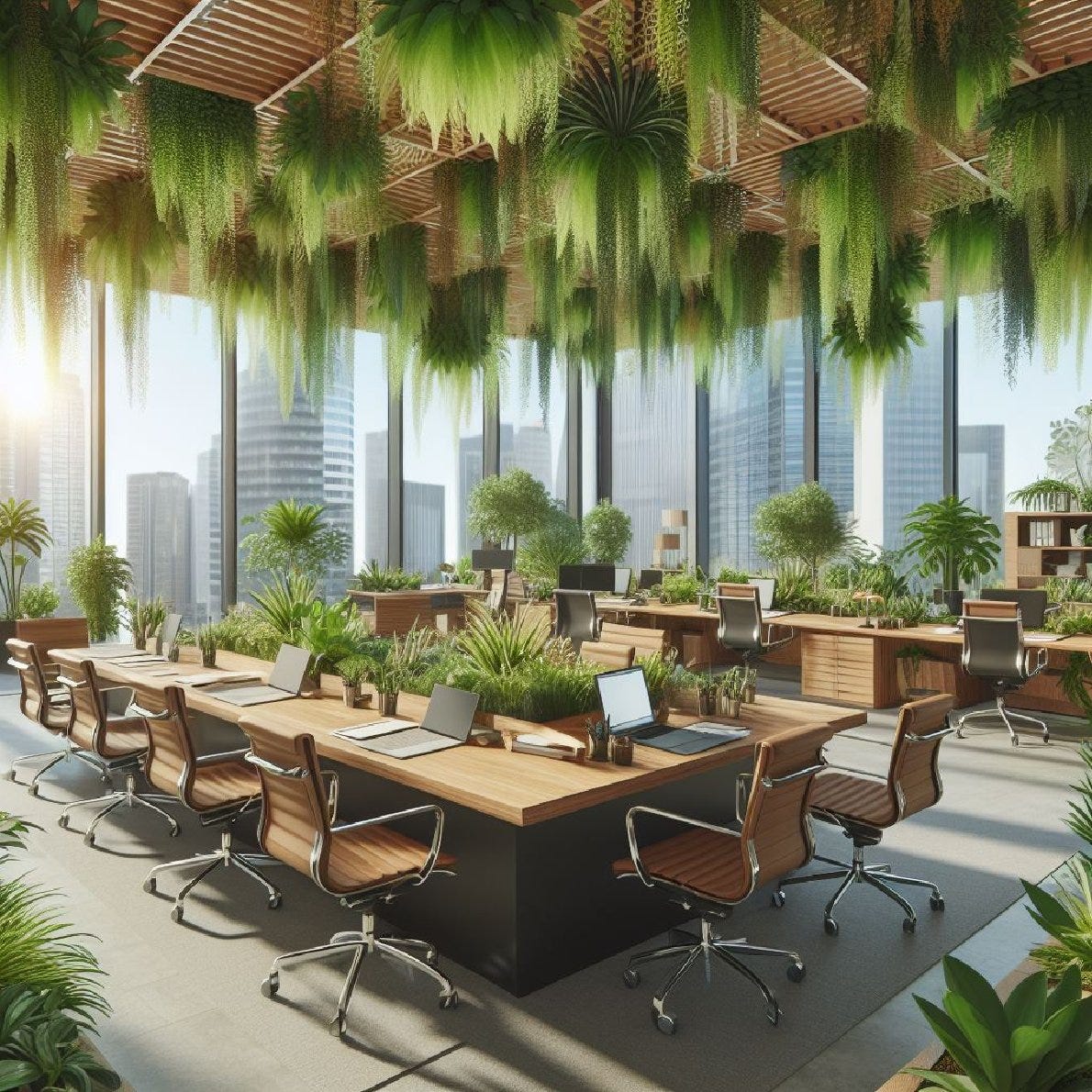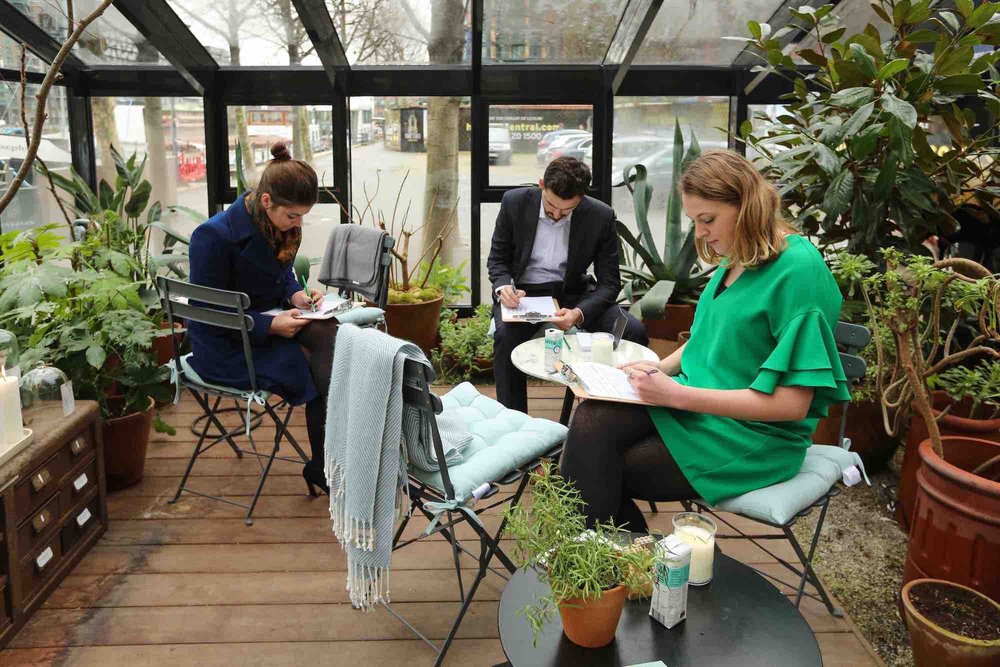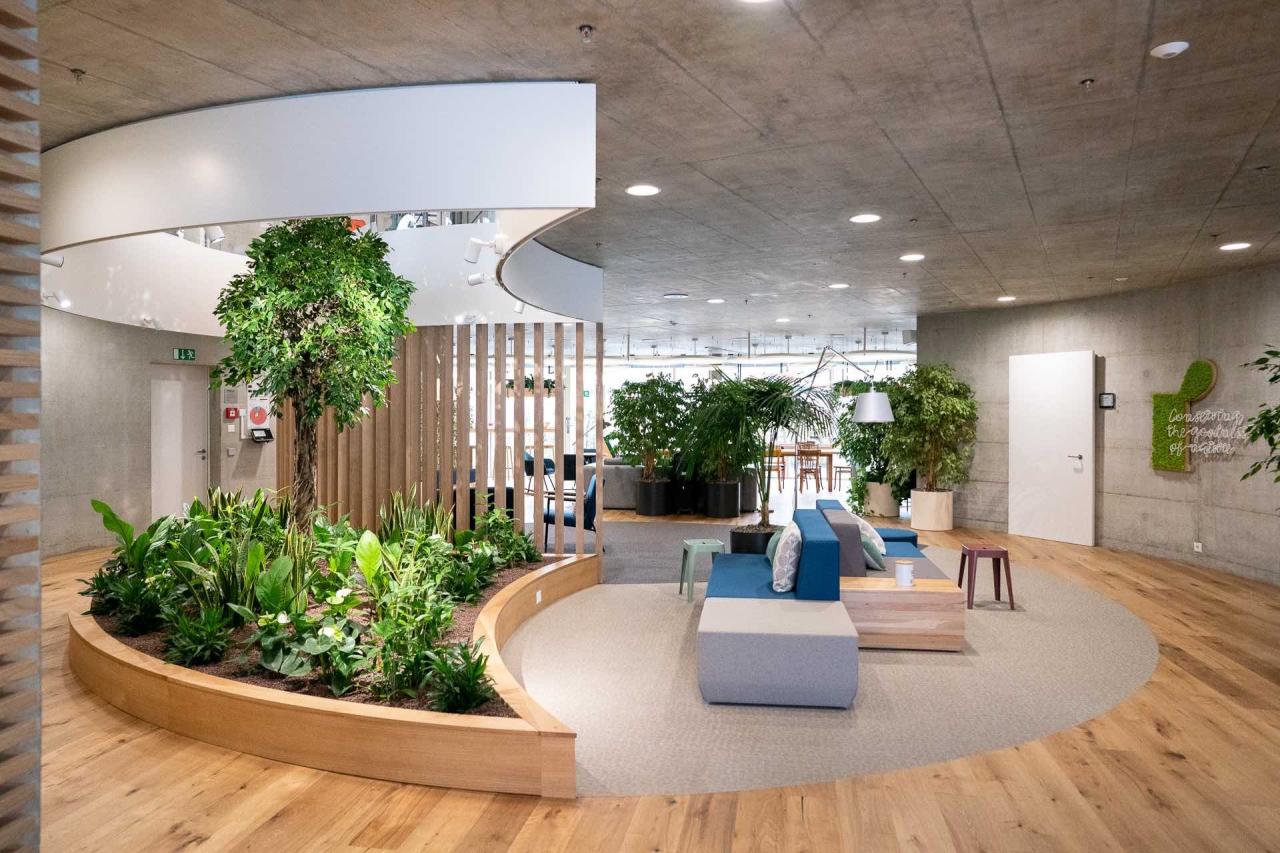With how biophilic design boosts mental wellness at the forefront, this paragraph opens a window to an amazing start and intrigue, inviting readers to embark on a storytelling journey filled with unexpected twists and insights.
Biophilic design, a concept deeply rooted in our innate connection to nature, has been gaining recognition for its ability to enhance mental wellness in various environments. From offices to homes and public spaces, the integration of natural elements has shown remarkable benefits on our well-being.
Importance of Biophilic Design

Biophilic design is a concept that seeks to incorporate nature and natural elements into our built environment in order to create spaces that promote well-being and mental health. By connecting people to nature, biophilic design has the ability to positively impact mental wellness in various settings.
Positive Impact on Mental Wellness
- Reduced stress and anxiety: Biophilic design elements such as natural light, indoor plants, and views of nature have been shown to reduce stress levels and promote a sense of calm.
- Improved cognitive function: Exposure to nature has been linked to improved concentration, creativity, and productivity, making biophilic design beneficial in work and learning environments.
- Enhanced mood and well-being: Being surrounded by nature or natural elements can elevate mood, increase overall happiness, and improve mental health in both residential and public spaces.
Examples in Different Settings
- Offices:Incorporating biophilic design elements like living green walls, natural materials, and outdoor views can create a more inspiring and productive work environment.
- Homes:Introducing indoor plants, natural light, and nature-inspired decor can help create a calming and rejuvenating atmosphere in residential spaces.
- Public Spaces:Parks, gardens, and green urban spaces designed with biophilic principles offer opportunities for relaxation, social interaction, and mental rejuvenation for the community.
Psychological Benefits of Biophilic Design
Biophilic design goes beyond just aesthetics; it has a profound impact on our mental well-being. By incorporating elements of nature into our built environments, we can experience a range of psychological benefits that contribute to reducing stress, anxiety, and improving cognitive function and creativity.
Reducing Stress and Anxiety Levels
Research has shown that exposure to nature, even in small doses, can significantly reduce stress levels. Biophilic design elements such as natural light, indoor plants, and views of green spaces have been linked to lower cortisol levels, decreased heart rate, and overall feelings of calmness and relaxation.
By bringing nature indoors, we create environments that promote a sense of tranquility and well-being.
Improving Cognitive Function and Creativity
Biophilic design has been found to enhance cognitive function and creativity. Studies have shown that incorporating natural elements into workspaces can lead to improved focus, problem-solving skills, and overall productivity. Greenery, natural textures, and water features can stimulate the brain, boost mood, and foster a sense of inspiration and innovation.
Research Findings on Psychological Benefits
Numerous studies have documented the positive effects of biophilic design on mental health. For example, a study published in the Journal of Environmental Psychology found that hospital patients with views of nature had lower stress levels and required less pain medication compared to those with views of a brick wall.
Another study in the Journal of Experimental Psychology: Applied reported that employees working in environments with natural elements showed a 15% increase in creativity.
Elements of Biophilic Design

Biophilic design incorporates various elements inspired by nature to create spaces that promote mental wellness and overall well-being. These elements include natural light, plants, water features, and the use of natural materials.
Natural Light
Natural light is essential for creating a connection to the outdoors and regulating our circadian rhythms. Exposure to natural light can improve mood, increase productivity, and enhance overall well-being. To incorporate natural light effectively, consider maximizing windows, using light-filtering curtains, and arranging furniture to allow sunlight to penetrate the space.
Plants
Plants have been proven to reduce stress, boost creativity, and improve air quality. They bring a sense of tranquility and vitality to indoor spaces. To incorporate plants effectively, consider adding a variety of plant types, sizes, and shapes. Place them strategically near windows or in areas where they can be easily seen and cared for.
Water Features
Water features such as indoor fountains or aquariums can have a calming effect on individuals and reduce stress levels. The sound of flowing water can create a peaceful ambiance and enhance relaxation. To incorporate water features effectively, choose a location where the sound of water can be heard throughout the space and ensure proper maintenance to prevent any issues.
Natural Materials
Using natural materials like wood, stone, and bamboo can create a sense of warmth and connection to the environment. These materials add texture, depth, and a feeling of authenticity to interior spaces. To incorporate natural materials effectively, choose sustainable options and incorporate them into furniture, flooring, and decor elements.
Biophilic Design in Different Settings
Biophilic design goes beyond just aesthetics; it has the power to transform various settings, such as workplaces, healthcare facilities, and educational environments, by incorporating nature-inspired elements to enhance well-being and productivity.
Workplaces
Integrating biophilic design in workplaces can lead to a significant boost in productivity and employee well-being. Natural elements like plants, natural light, and green spaces can reduce stress, increase creativity, and improve overall job satisfaction.
Healthcare Facilities
Biophilic design in healthcare facilities has a profound impact on patient recovery and staff satisfaction. Elements such as views of nature, water features, and biophilic materials can promote healing, reduce anxiety, and enhance the overall healthcare experience for both patients and staff.
Educational Environments
Implementing biophilic design in educational settings can positively influence student focus and learning outcomes. Exposure to nature elements like natural ventilation, green walls, and outdoor learning spaces can improve cognitive function, concentration, and academic performance among students.
Last Recap

In conclusion, the impact of biophilic design on mental wellness cannot be understated. By fostering a harmonious relationship between humans and nature, this design approach holds the key to a healthier and more balanced lifestyle. Embracing biophilic design is not just about aesthetics; it’s a transformative journey towards a brighter and more peaceful state of mind.
User Queries
How does biophilic design impact mental wellness?
Biophilic design enhances mental wellness by reducing stress levels, improving cognitive function, and fostering creativity through the incorporation of natural elements.
What are some key elements of biophilic design?
Key elements include natural light, plants, water features, and natural materials, all of which contribute to enhancing mental wellness in interior spaces.
Where can biophilic design be applied?
Biophilic design can be applied in various settings such as workplaces to boost productivity, healthcare facilities to aid in patient recovery, and educational environments to enhance student focus and learning outcomes.









